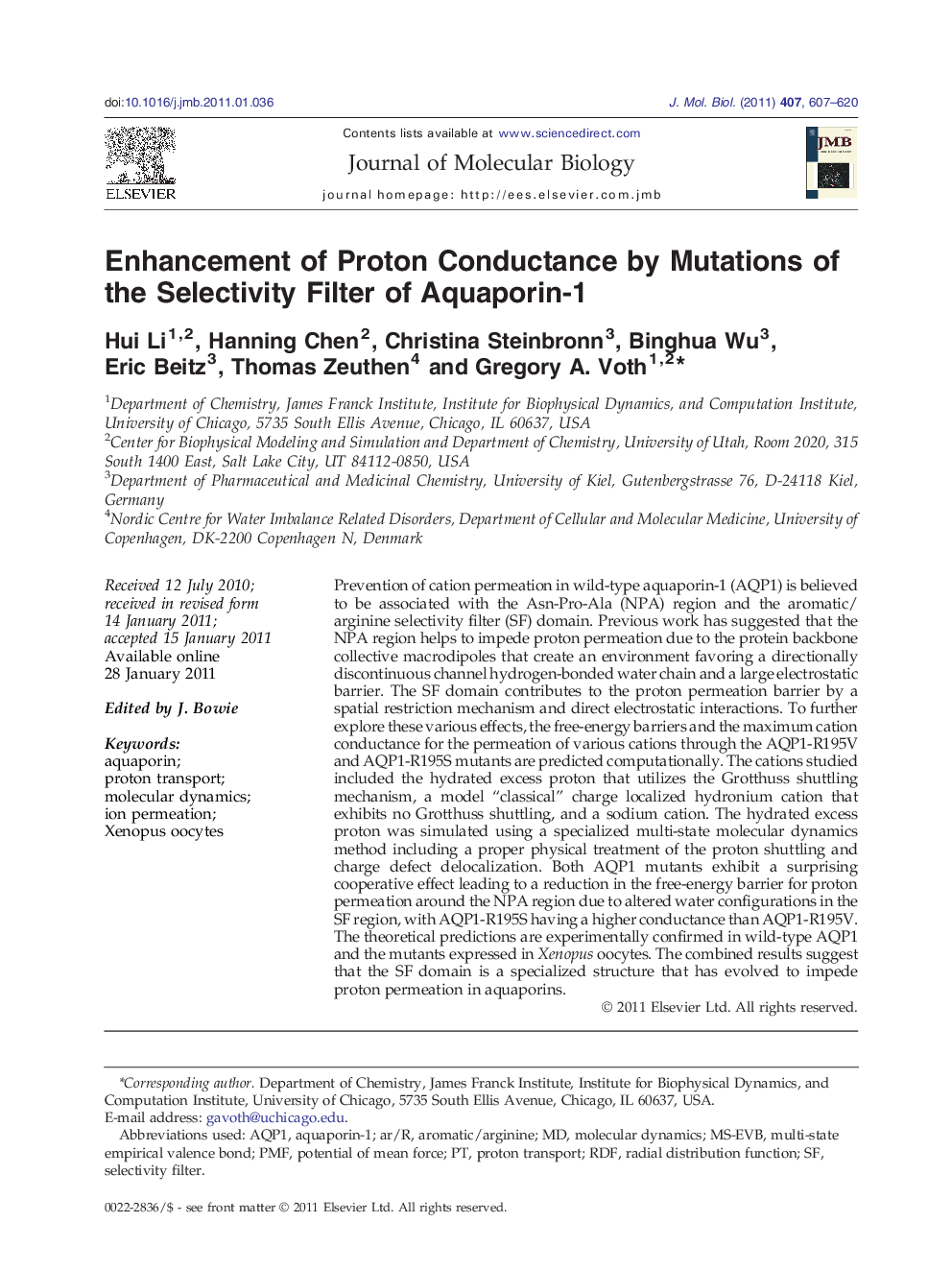| Article ID | Journal | Published Year | Pages | File Type |
|---|---|---|---|---|
| 2185611 | Journal of Molecular Biology | 2011 | 14 Pages |
Prevention of cation permeation in wild-type aquaporin-1 (AQP1) is believed to be associated with the Asn-Pro-Ala (NPA) region and the aromatic/arginine selectivity filter (SF) domain. Previous work has suggested that the NPA region helps to impede proton permeation due to the protein backbone collective macrodipoles that create an environment favoring a directionally discontinuous channel hydrogen-bonded water chain and a large electrostatic barrier. The SF domain contributes to the proton permeation barrier by a spatial restriction mechanism and direct electrostatic interactions. To further explore these various effects, the free-energy barriers and the maximum cation conductance for the permeation of various cations through the AQP1-R195V and AQP1-R195S mutants are predicted computationally. The cations studied included the hydrated excess proton that utilizes the Grotthuss shuttling mechanism, a model “classical” charge localized hydronium cation that exhibits no Grotthuss shuttling, and a sodium cation. The hydrated excess proton was simulated using a specialized multi-state molecular dynamics method including a proper physical treatment of the proton shuttling and charge defect delocalization. Both AQP1 mutants exhibit a surprising cooperative effect leading to a reduction in the free-energy barrier for proton permeation around the NPA region due to altered water configurations in the SF region, with AQP1-R195S having a higher conductance than AQP1-R195V. The theoretical predictions are experimentally confirmed in wild-type AQP1 and the mutants expressed in Xenopus oocytes. The combined results suggest that the SF domain is a specialized structure that has evolved to impede proton permeation in aquaporins.
Graphical AbstractFigure optionsDownload full-size imageDownload high-quality image (147 K)Download as PowerPoint slideResearch Highlights► Proton/cation permeation rates calculated in AQP1 mutants. ► Novel cooperative effect found in wild-type channel for blocking proton permeation. ► Computational predictions confirmed by electrophysiology experiments. ► Selectivity filter domain likely evolved to impede proton permeation in aquaporins.
